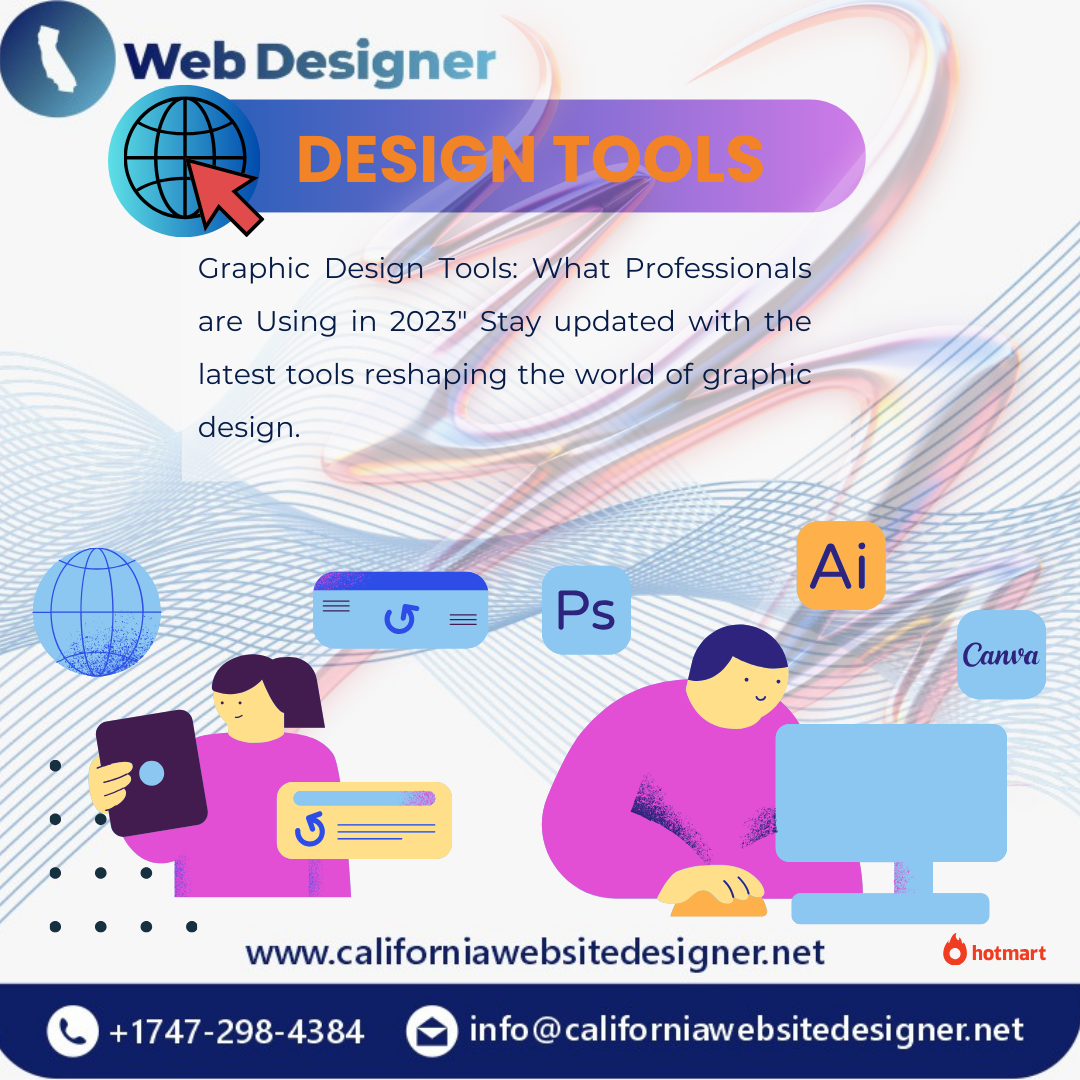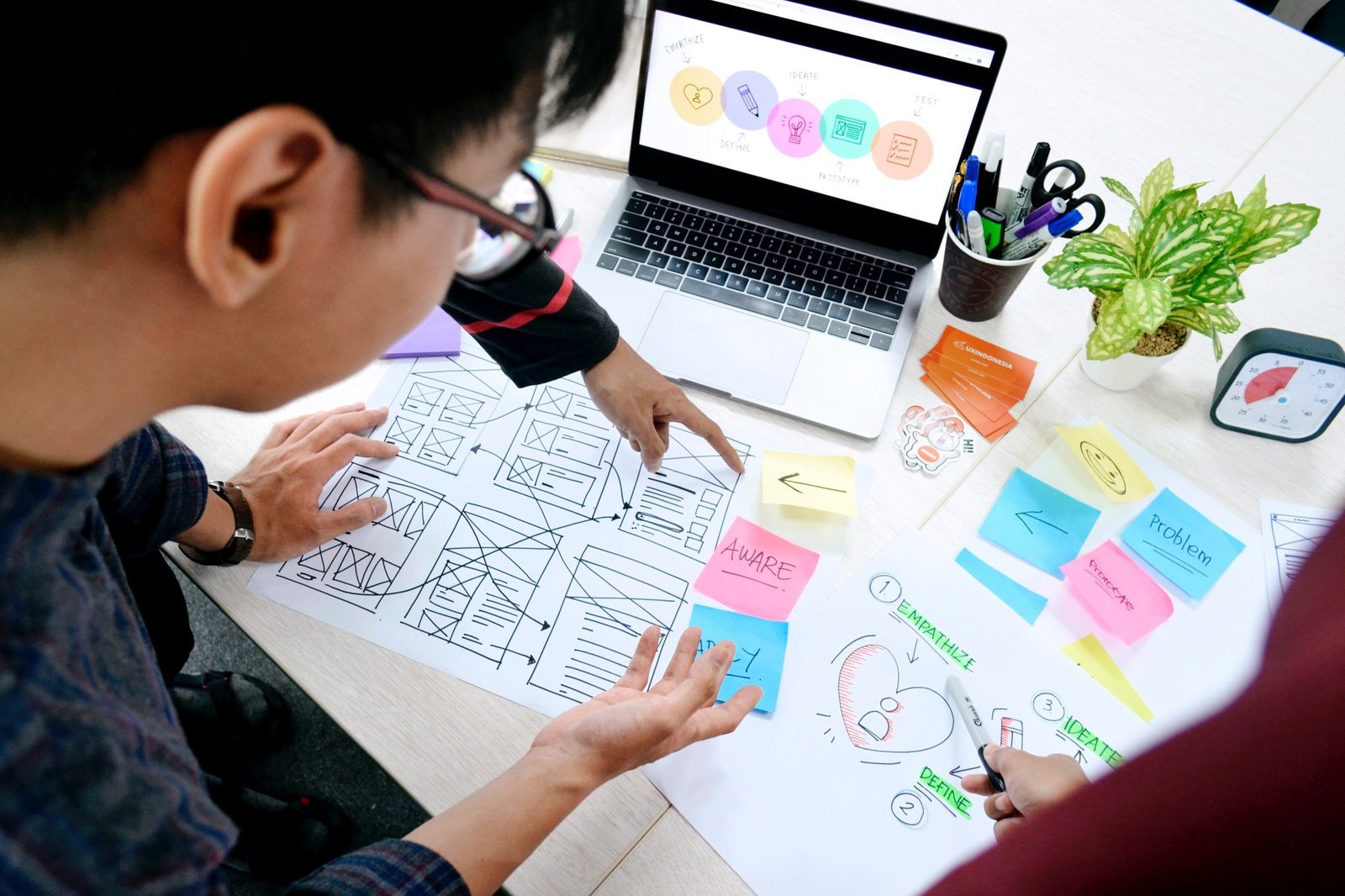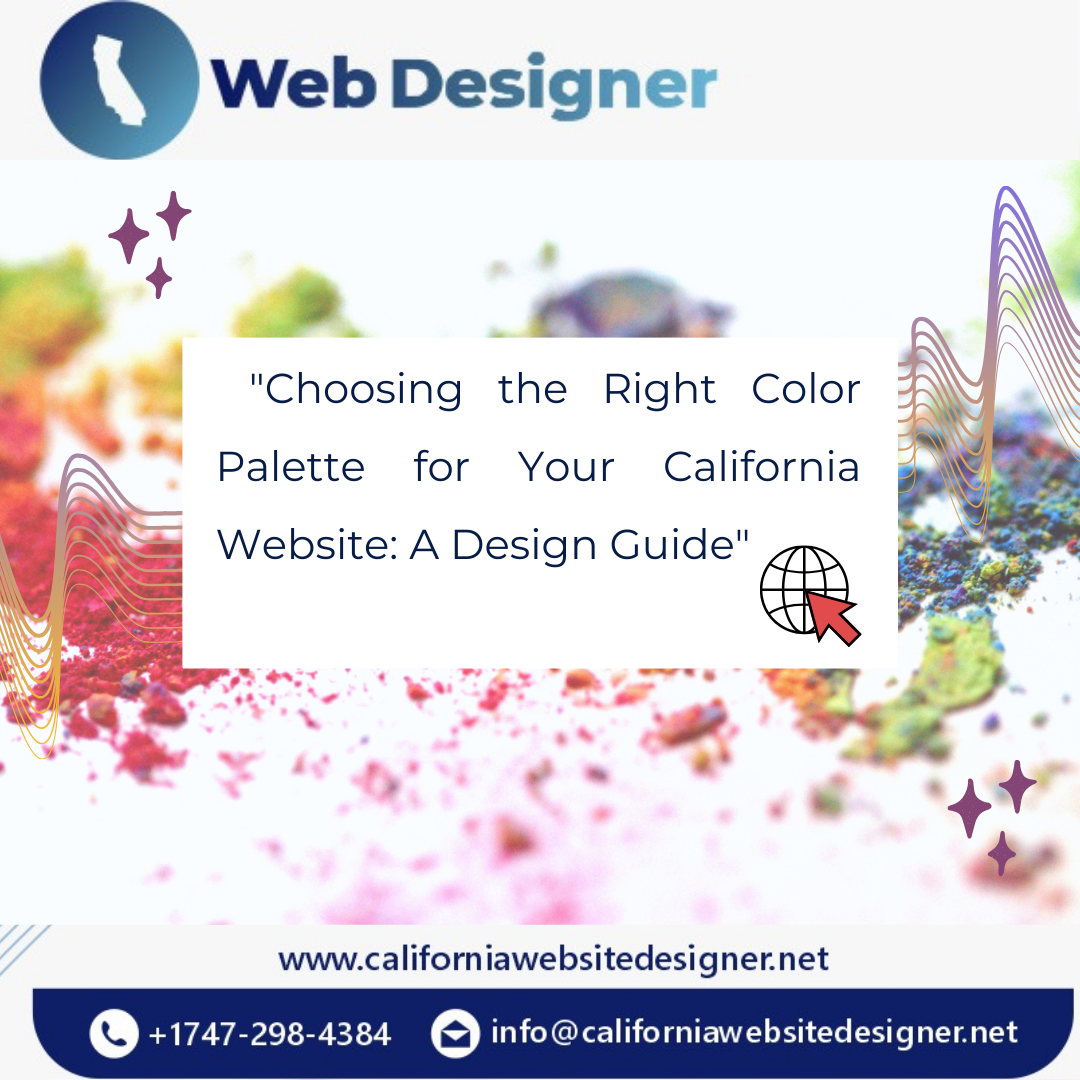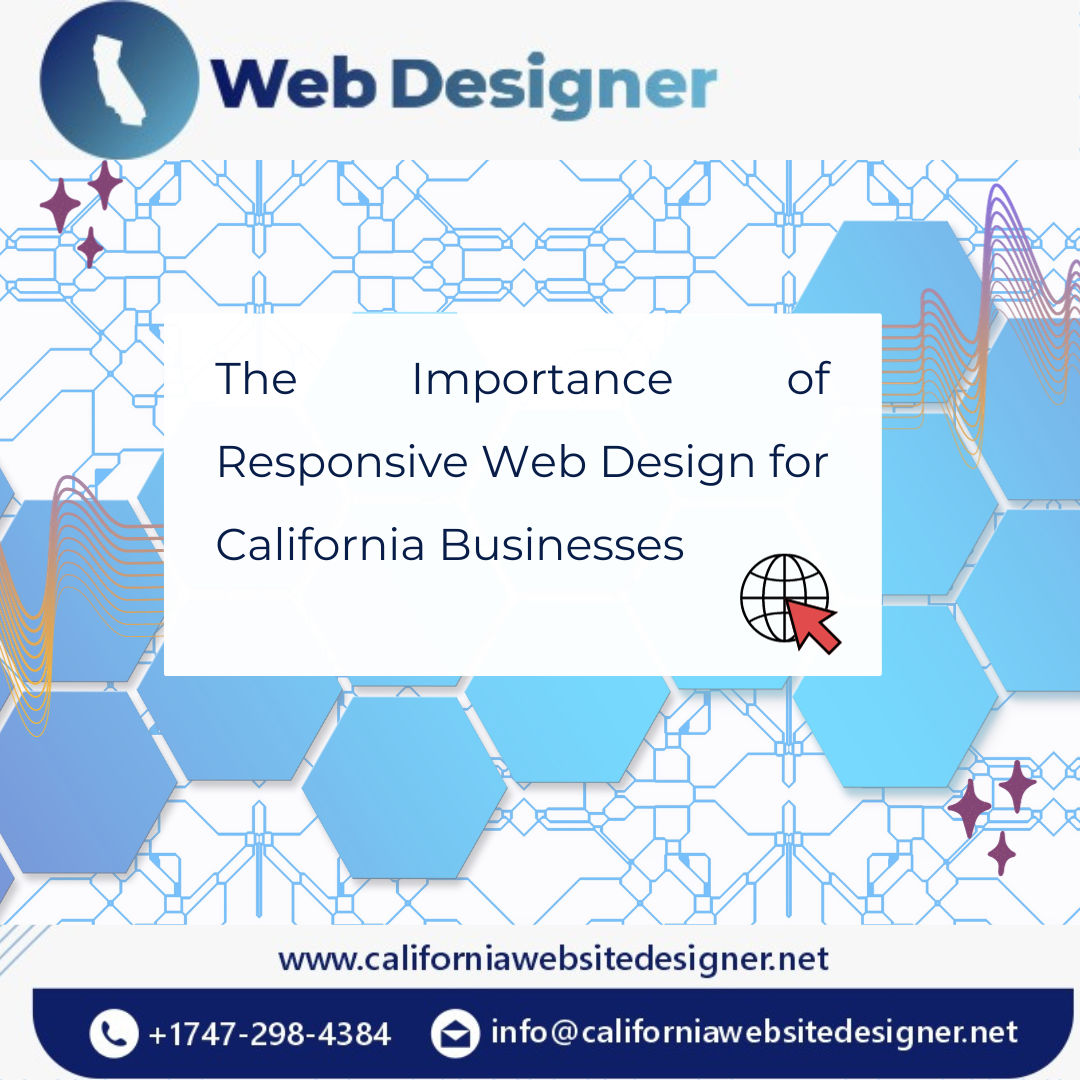Graphic Design Tools: Navigating the dynamic world of graphic design requires tapping into the newest tools that reshape how we create. Now, in 2023, an abundance of cutting-edge graphic design tools has surfaced, providing professionals with the means to enhance their artistic skills. From intuitive interfaces to effective capabilities, these gear empower designers to unleash their creativity and stay at the forefront of the ever-evolving design panorama. As technology evolves, so do the possibilities for photo designers to deliver their innovative visions to life.
Graphic Design Tools
1-Adobe Creative Cloud Suite: The Time-Tested Titan
Adobe Creative Cloud encompasses a suite of tools designed to cover every aspect of graphic design. Two standout applications within this suite are Photoshop for image editing and Illustrator for vector graphics. These graphic design tools, among others, collectively form an unparalleled environment that empowers designers to bring their creative visions to life.
Features
Cloud Collaboration
One of the standout features of Adobe Creative Cloud is its emphasis on collaboration. Through Cloud Collaboration, designers can seamlessly work together, fostering a collaborative environment that enhances productivity. No longer bound by geographical constraints, team members can simultaneously contribute to projects, making the design process fluid and dynamic.
Regular Updates
In the fast-paced world of design, staying ahead is paramount. Adobe recognizes this need and ensures that Creative Cloud users always have access to cutting-edge features through regular updates. These updates not only introduce new tools but also enhance existing ones, keeping designers at the forefront of creative innovation.
Adobe Stock Integration
Creativity often thrives on inspiration, and Adobe Creative Cloud understands this fundamental need. With Adobe Stock Integration, designers gain access to a vast library of assets ranging from high-quality images to dynamic templates. This integration opens up a world of creative possibilities, allowing designers to explore and incorporate diverse elements into their projects effortlessly.
Cloud Collaboration in Action
To illustrate the impact of Cloud Collaboration, consider a scenario where a design team is working on a project with members spread across different locations. Traditional collaboration might involve cumbersome file exchanges and delays, but with Adobe Creative Cloud, designers can collaborate in real time. Changes made by one team member are instantly visible to others, fostering a dynamic and efficient workflow.
Regular Updates: A Gateway to Innovation
Imagine a designer working on a project and suddenly gaining access to a new set of tools that revolutionize their approach. This is the essence of Adobe Creative Cloud’s commitment to regular updates. These updates not only introduce innovative features but also address user feedback, ensuring that the toolset evolves in response to the ever-changing needs of the design community.
Unlocking Creative Potential with Adobe Stock
In a world saturated with visuals, finding the right assets can be a time-consuming challenge. Adobe Stock Integration within Creative Cloud addresses this by providing a treasure trove of high-quality images, illustrations, and templates. This vast resource not only accelerates the design process but also serves as a wellspring of inspiration for designers looking to elevate their work.
Adobe Creative Cloud stands as a time-tested titan in the graphic design tools realm. Its seamless Cloud Collaboration, commitment to Regular Updates and integration with Adobe Stock collectively form a trifecta that empowers designers to push the boundaries of creativity. Whether you’re a seasoned professional or a budding designer, Adobe Creative Cloud remains an indispensable ally in the pursuit of graphic design excellence.
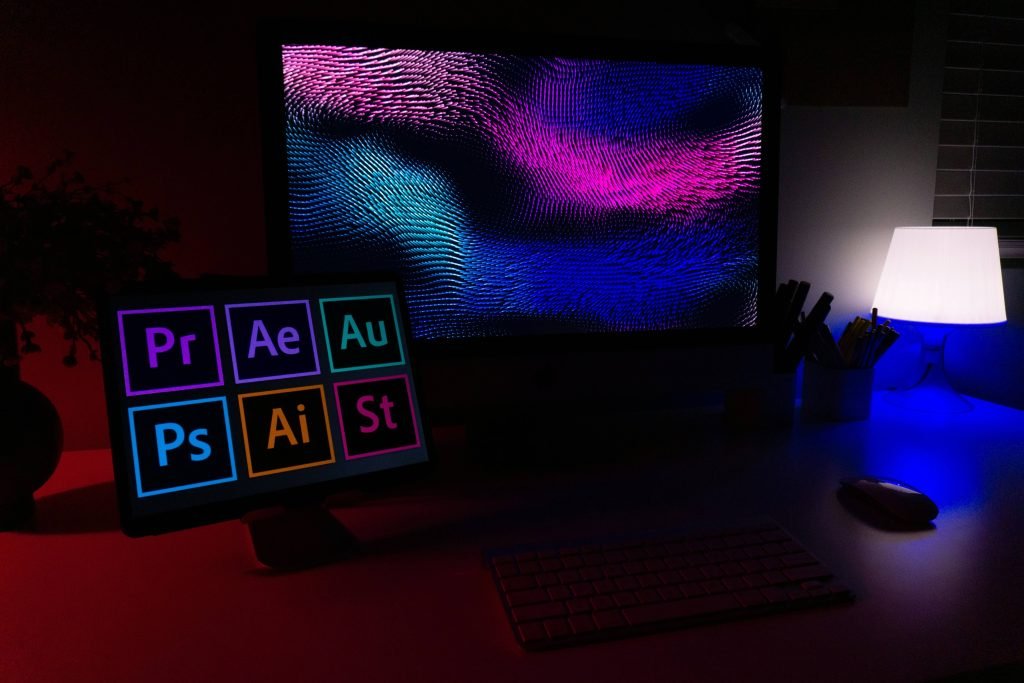
2. Figma: Revolutionizing Collaborative Design
In the ever-evolving panorama of graphic layout, the need for seamless collaboration is paramount. Figma, a frontrunner in this regard, has swiftly risen to prominence, becoming the preferred platform for collaborative design. Its online interface acts as a bridge, transcending geographical constraints and fostering a collaborative environment that redefines the traditional design process.
Real-Time Collaboration: The Game-Changer
One of Figma’s standout features is its real-time collaboration capabilities. Imagine working on a project with team members across the globe, where every edit, tweak, and adjustment happens instantly. With Figma, this is not a mere imagination but a tangible reality. Multiple users can actively engage in a project simultaneously, eliminating the delays associated with traditional file-sharing methods. This real-time collaboration feature not only enhances productivity but also encourages a dynamic exchange of ideas, giving birth to designs that seamlessly amalgamate diverse perspectives.
Effortless Prototyping for Impactful Presentations
In the realm of client presentations, first impressions are everything. Figma is among these graphic design tools that acknowledge this truth and empower designers with its effortless prototyping feature. Creating interactive prototypes has never been more straightforward. Designers can showcase the flow and functionality of their creations, providing clients with a tangible experience of the final product. This not only streamlines communication but also ensures that everyone involved is on the same page regarding design expectations. Figma’s prototyping capabilities contribute to a more engaging and interactive design review process, elevating the overall client experience.
Accessibility Redefined: Anytime, Anywhere
Figma understands that creativity knows no boundaries and strikes at any moment. To facilitate this spontaneity, Figma ensures accessibility from any device with internet connectivity. Whether you’re at your desk, commuting, or enjoying a coffee at your favorite spot, Figma accompanies you. The platform’s cloud-based architecture means that your designs are securely stored in the cloud, ready to be accessed whenever inspiration strikes. This accessibility not only adds flexibility to a designer’s workflow but also breaks down the barriers of traditional design spaces, enabling collaboration and creativity at any time, from anywhere.
The Figma Experience: Where Simplicity Meets Power
Figma’s user-friendly interface is the cherry on top of its feature-rich offering. The platform strikes a harmonious balance between power and simplicity, ensuring that both seasoned designers and newcomers find it intuitive. The drag-and-drop functionality, coupled with a minimalist layout, makes navigation a breeze. Figma does not burden its users with a steep gaining knowledge of curves; as a substitute, it invites them to discover and experiment with layout ideas effortlessly.
In the dynamic realm of graphic design tools, Figma stands tall as a revolutionary force in collaborative design. Its real-time collaboration, prototyping prowess, and unmatched accessibility redefine the way designers work together. Figma not only facilitates teamwork but also amplifies the creative process, making it a go-to platform for professionals navigating the intricate landscape of graphic design in 2023. As you embark on your design journey, consider the collaborative power of Figma as your ally, unlocking new dimensions of creativity and efficiency in the ever-evolving world of graphic design.
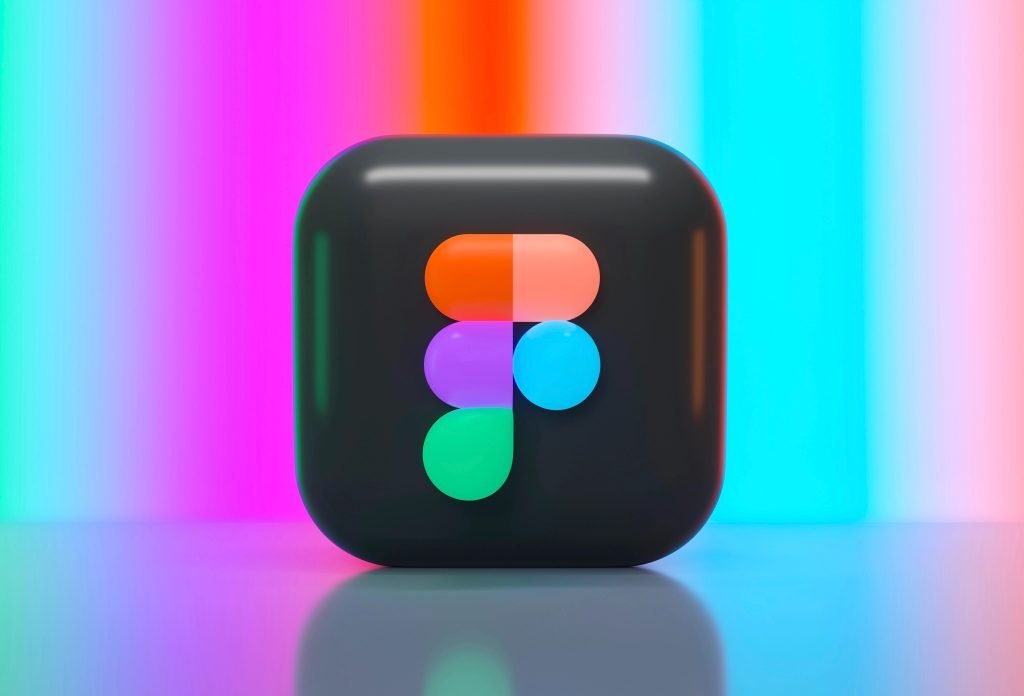
3. Procreate: A Digital Illustration Powerhouse
In the expansive realm of digital illustration, one tool stands out as a true powerhouse—Procreate. Designed with artists and illustrators in mind, Procreate offers an intuitive platform that unleashes boundless creativity. Let’s delve into the features that make Procreate an indispensable companion for anyone venturing into the captivating world of digital art.
The Natural Brush Engine: Bridging Tradition and Innovation
Procreates’ is one of the graphic design tools and its standout feature is its Natural Brush Engine, a technological marvel that seamlessly bridges the gap between traditional and digital art tools. For artists accustomed to the tactile feel of brushes on canvas, Procreates Natural Brush Engine replicates this experience digitally. The strokes feel authentic, mirroring the nuances of traditional artistry. This not only aids in a smooth transition for traditional artists embracing digital mediums but also adds a layer of authenticity to digital creations.
Time-Lapse Recording: Capturing the Journey of Creation
Creativity is a journey, and Procreate ensures that every step of this journey is documented with its Time-Lapse Recording feature. This functionality is a game-changer for content creators and tutorial makers. As you bring your artistic vision to life on Procreate’s canvas, the Time-Lapse Recording captures every brushstroke, every layer added, and every transformation. This feature not only serves as a mesmerizing visual representation of your creative process but has also proven invaluable for sharing your techniques with others. Whether you’re creating captivating speed art videos or comprehensive tutorials, Procreate’s Time-Lapse Recording is a tool that adds depth to your creative journey.
Limitless Canvas: Where Imagination Knows No Bounds
One of the most liberating aspects of Procreate is its provision of a Limitless Canvas. In the digital realm, where constraints can sometimes stifle creativity, Procreate breaks free from limitations. The vastness of the digital canvas allows artists to explore without boundaries, encouraging experimentation and pushing the limits of imagination. Whether you’re sketching, illustrating, or crafting intricate designs, Procreate’s Limitless Canvas ensures that your creativity is never confined. This expansive space fosters a sense of artistic freedom, where ideas can flow unrestricted, and every corner of the canvas becomes a playground for innovation.
Procreate in Action: A Visual Journey
To truly grasp the impact of Procreate on digital illustration, imagine an artist seamlessly transitioning from a physical sketchpad to the digital realm. With the Natural Brush Engine, the strokes on the digital canvas mimic the artist’s traditional techniques, creating a bridge between the familiar and the innovative. As the artist progresses, the Time-Lapse Recording captures each stroke, each layer, and each transformation—a visual narrative of the creative process unfolding. The Limitless Canvas provides the backdrop, an expansive space where the artist’s imagination takes flight without constraints.
Procreate emerges not just as a tool but as a companion in the creative journey. Its Natural Brush Engine, Time-Lapse Recording, and Limitless Canvas redefine digital illustration, making it accessible, authentic, and boundlessly creative. Whether you’re an artist seeking to transition from traditional to digital or a content creator sharing your creative process with the world, Procreate is the catalyst that propels your artistic expression to new heights. Embrace the power of Procreate, where the digital canvas becomes a realm of infinite possibilities.
4. Canva: Simplifying Design for Everyone
In the vast universe of graphic design tools, Canva emerges as a game-changer, breaking down barriers and making design accessible to everyone. From novices taking their first steps into the creative realm to seasoned professionals, Canva has successfully democratized the design process.
Features
User-Friendly Interface: Design Made Easy
Canvas’s strength lies in its simplicity. The user-friendly interface invites even the most novice designers to create stunning visuals effortlessly. With an intuitive drag-and-drop functionality, users can seamlessly arrange elements, making design feel like second nature.
Imagine assembling a digital puzzle; that’s how easy it is to bring your ideas to life with Canva. No steep learning curves, and no complex tools—just a straightforward, visually-driven platform that empowers users to unleash their creativity without technical hurdles.
Templates Galore: A Design Buffet for Every Occasion
One of Canvas’s standout features is its extensive library of templates. Whether you’re crafting social media posts, designing presentations, or creating eye-catching event invitations, Canvas template galore has you covered.
The templates aren’t just abundant; they are diverse and cater to various styles and themes. From professional business presentations to whimsical birthday invitations, there’s a template for every occasion. This vast collection not only accelerates the design process but also serves as a wellspring of inspiration for those looking to explore different design aesthetics.
Brand Kit: Consistency at Your Fingertips
Maintaining brand consistency is a cornerstone of effective design, especially for businesses and individuals with established brands. Canva simplifies this process with its ingenious Brand Kit feature.
The Brand Kit allows users to centralize all brand-related elements in one place. Logos, color schemes, fonts—every essential brand element can be stored and accessed effortlessly. This not only streamlines the design workflow but also ensures that every visual output aligns seamlessly with the established brand identity.
Imagine effortlessly applying your company’s color scheme or logo to any design project with just a few clicks. Canvas’s Brand Kit turns this into a reality, making brand consistency an achievable goal for designers of all levels.
Let’s say you’re a small enterprise proprietor gearing up for a social media campaign. With Canvas’s user-pleasant interface, you may without problems craft visually attractive posts with the aid of dragging and losing factors like textual content, pics, and icons. The vast template library presents you with geared-up designs flawlessly tailor-made for social media structures, saving you time and effort.
Moreover, the Brand Kit comes into play when you want to ensure that all your social media posts align with your brand. You upload your logo, select your brand colors, and voila! Every design you create maintains a cohesive look, reinforcing your brand identity across all your digital touchpoints.
Canva’s brilliance lies in its ability to bridge the gap between design novices and professionals. By providing a user-friendly interface, a wealth of templates, and a robust Brand Kit, Canva empowers individuals to bring their creative visions to life without the barriers of complexity. In the vibrant landscape of graphic design tools, Canva stands tall as the inclusive platform where everyone, regardless of their design prowess, can unleash their creativity.
5. Sketch: Tailored Excellence for UI/UX Designers
In the vibrant world of UI/UX design, where every pixel matters, Sketch is one of the graphic design tools that emerges as an indispensable ally for designers seeking precision, functionality, and adaptability. Tailored explicitly for the intricacies of user interface and experience design, Sketch has become the go-to tool for professionals crafting seamless digital experiences.
Precision through Vector Editing
At the heart of Sketch’s prowess lies its robust Vector Editing feature. In simpler terms, this means designers can create and manipulate shapes, icons, and elements with unparalleled accuracy. Unlike traditional image editing, which relies on pixels, vectors use mathematical equations to define shapes. This results in sharper, crisper visuals, especially crucial when designing UI elements where clarity is paramount.
In essence, Vector Editing in Sketch empowers designers to zoom into the minutest details without losing image quality. Whether it’s crafting the perfect button or refining the edges of an icon, this feature ensures that every design element aligns with the meticulous standards of UI/UX design.
Expanding Horizons with Plugins
Sketch’s allure extends beyond its core features through its dynamic plugin ecosystem. Think of plugins as additional tools that seamlessly integrate with Sketch, enhancing its capabilities based on specific design needs. This expansive array of plugins covers a spectrum of functionalities, from automating repetitive tasks to introducing advanced design elements.
For instance, a UI/UX designer focusing on mobile app design might leverage a plugin that generates device-specific assets automatically. Another designer working on web interfaces could explore plugins for prototyping and user flow visualization. The flexibility of Sketch’s Plugins Ecosystem allows designers to tailor their toolkit, adapting it to the unique demands of each project.
Navigating Diversity with Responsive Artboards
In the ever-evolving landscape of digital gadgets, designing for more than one display size and resolution is a mission. This is where Sketch’s Responsive Artboards come into play, simplifying the technique of making designs that seamlessly adapt to various devices.
Imagine you’re designing a mobile app. With traditional tools, you might need separate files or canvases for each device type. Sketch revolutionizes this workflow by introducing Responsive Artboards. These intelligent canvases automatically adjust based on the device, enabling designers to visualize and tweak their creations for everything from smartphones to tablets effortlessly.
In practical terms, Responsive Artboards save time and ensure consistency across diverse platforms. Designers can preview how their creations will appear on different devices within the same workspace, streamlining the design process and minimizing the chances of overlooking crucial details.
In the realm of UI/UX design, precision, adaptability, and efficiency are non-negotiable. Sketch not only meets these criteria but sets a gold standard for designers worldwide. With Vector Editing providing pixel-perfect precision, a vibrant plugin ecosystem expanding possibilities, and Responsive Artboards simplifying cross-device design, Sketch stands as a testament to intuitive design tools tailored for the modern designer.
As UI/UX design continues to shape digital interactions, Sketch remains at the forefront, empowering designers to transform their visions into seamless, user-centric realities. Embrace the precision, explore the possibilities, and elevate your UI/UX game with Sketch in 2023.
6. Gravit Designer: A Powerful Free Alternative
In the realm of graphic design, where premium tools often come with a hefty price tag, Gravit Designer is one of the graphic design tools that emerges as a beacon for budget-conscious designers. This free alternative stands tall, offering a feature-rich environment that refuses to compromise on capabilities.
Features
Cross-Platform Compatibility: Design Anywhere, Anytime
Gravit Designer breaks down barriers with its exceptional cross-platform compatibility. Whether you are a Windows enthusiast, a Mac aficionado, or a Linux loyalist, this tool seamlessly integrates into your preferred operating gadget. Furthermore, for people who feel flexibility, Gravit Designer is available through a web browser, making sure you can unleash your creativity from absolutely any device.
Vector Editing: Precision at Your Fingertips
One of Gravit Designer’s standout features lies in its robust vector editing capabilities. Don’t be fooled by its free status—Gravit Designer rivals premium design software when it comes to manipulating vectors. This means you can create intricate designs with precision, ensuring your artwork looks flawless, whether it’s destined for digital screens or high-quality prints.
Cloud Storage: You’re Designs, Anytime, Anywhere
Imagine a world where your design files are not confined to a single device. Gravit Designer turns this into reality with its cloud storage integration. Now, you can store your design projects securely in the cloud and access them whenever inspiration strikes. Whether you’re transitioning between devices or collaborating with a team, the cloud feature ensures that your designs are always within reach.
Simplifying Complexity for Everyone
Gravit Designer doesn’t just cater to seasoned professionals; it’s designed for everyone. Its consumer-pleasant interface welcomes novices, permitting them to discover the arena of picture layout without feeling crushed. The intuitive drag-and-drop functionality guarantees that even in case you’re new to layout, you can quickly draw close to the fundamentals and start growing captivating visuals.
Bridging the Gap between Cost and Quality
While other design tools might require a substantial investment, Gravit Designer challenges the notion that quality comes with a high price. It provides a genuine alternative for individuals and small businesses who may not have the financial resources for premium software. Gravit Designer’s commitment to offering powerful features for free not only democratizes design but also empowers a diverse range of creators.
Community and Support
Gravit Designer’s community is more than just a user base; it’s a thriving ecosystem of designers supporting each other. The platform encourages collaboration and knowledge sharing, ensuring that users can tap into a vast pool of expertise. Whether you’re troubleshooting an issue or seeking creative inspiration, the Gravit Designer community stands as a testament to the tool’s inclusivity and the strength of its user support network.
Gravit Designer, as a powerful free alternative, goes beyond being just a tool; it’s a catalyst for unleashing creativity without financial constraints. With its cross-platform compatibility, robust vector editing, and cloud garage abilities, Gravit Designer stands as a testament to the democratization of layout equipment. Whether you’re a professional or a budding enthusiast, Gravit Designer invites you to explore the sector of graphic layout with an open mind and endless opportunities.
Conclusion
In the ever-evolving landscape of graphic design, staying abreast of the latest tools is imperative for professionals seeking to push creative boundaries. From the versatile Adobe Creative Cloud to the collaborative prowess of Figma, each graphic design tool brings a unique dimension to the designer’s toolkit. At California Website Designer Agency, we understand the significance of these tools. As we navigate 2023, harness the power of these tools to unlock your full creative potential.
Frequently Asked Questions
Q1: What are the essential graphic design tools for beginners?
A: For beginners, start with user-friendly tools like Canva and Gravit Designer. They offer intuitive interfaces, making the learning curve smoother.
Q2: Which graphic design tool is best for creating social media graphics?
A: Canva excels in creating social media graphics with its extensive template library and easy customization options. It’s a go-to for designing eye-catching posts.
Q3: Are there any free alternatives to premium graphic design software?
A: Yes, Gravit Designer is a powerful free alternative with cross-platform compatibility, vector editing, and cloud storage, comparable to premium tools.
Q4: What tool do professionals use for intricate digital illustrations?
A: Professionals often turn to Procreate for digital illustrations. Its natural brush engine and limitless canvas make it a favorite among artists and illustrators.
Q5: How essential is Adobe Creative Cloud for image designers?
A: Adobe Creative Cloud is crucial for graphic designers because of its complete suite, inclusive of Photoshop and Illustrator, supplying a huge variety of design abilities.
Q6: What tool is recommended for collaborative design projects?
A: Figma stands out for collaborative design projects. Its real-time collaboration feature allows multiple users to work on a project simultaneously, fostering seamless teamwork.
Q7: Can I use graphic design tools on different operating systems?
A: Yes, Gravit Designer and Figma are examples of tools with cross-platform compatibility, allowing users to design on Windows, Mac, Linux, or through a web browser.
Q8: Which graphic design tools are best for UI/UX design with responsive capabilities?
A: Sketch is tailored for UI/UX designers, offering responsive artboards and a robust plugin ecosystem for precision in design across various devices.
Q9: How does cloud storage benefit graphic designers?
A: Cloud storage, as seen in tools like Gravit Designer, enables designers to store and access their projects from any device, facilitating seamless workflow and collaboration.
Q10: Can Canva be used for professional graphic design work?
A: Yes, Canva is suitable for professional graphic design work. Its user-friendly interface, coupled with a rich template library, makes it versatile for various design needs.

